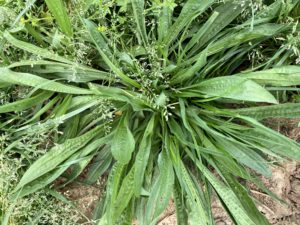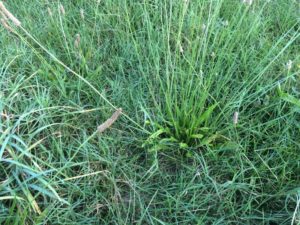Plantain – Weed ID Wednesday
go.ncsu.edu/readext?695929
en Español / em Português
El inglés es el idioma de control de esta página. En la medida en que haya algún conflicto entre la traducción al inglés y la traducción, el inglés prevalece.
Al hacer clic en el enlace de traducción se activa un servicio de traducción gratuito para convertir la página al español. Al igual que con cualquier traducción por Internet, la conversión no es sensible al contexto y puede que no traduzca el texto en su significado original. NC State Extension no garantiza la exactitud del texto traducido. Por favor, tenga en cuenta que algunas aplicaciones y/o servicios pueden no funcionar como se espera cuando se traducen.
Português
Inglês é o idioma de controle desta página. Na medida que haja algum conflito entre o texto original em Inglês e a tradução, o Inglês prevalece.
Ao clicar no link de tradução, um serviço gratuito de tradução será ativado para converter a página para o Português. Como em qualquer tradução pela internet, a conversão não é sensivel ao contexto e pode não ocorrer a tradução para o significado orginal. O serviço de Extensão da Carolina do Norte (NC State Extension) não garante a exatidão do texto traduzido. Por favor, observe que algumas funções ou serviços podem não funcionar como esperado após a tradução.
English
English is the controlling language of this page. To the extent there is any conflict between the English text and the translation, English controls.
Clicking on the translation link activates a free translation service to convert the page to Spanish. As with any Internet translation, the conversion is not context-sensitive and may not translate the text to its original meaning. NC State Extension does not guarantee the accuracy of the translated text. Please note that some applications and/or services may not function as expected when translated.
Collapse ▲Plantain can be found across pastures, hayfields, yards, and even turf. You may recognize it from it’s long stem and seed head that are easily turned into a rocket launcher! While it does not pose a risk to livestock if consumed, it does compete with forages that would provide more nutritional value to our animals. Depending on the type of plantain, leaves can be both narrow and wide. They cast a decent sized shadow around them, which does not encourage growth of other plants.
Plantain’s growth habits make it more difficult to control. It grows in a rosette form, leaving it close to the ground. It also has a long tap root that helps it be more drought tolerant. Because of these characteristics, plantain is not effectively controlled by hand pulling, close grazing, or even persistent mowing. Plantain can be effectively controlled with an appropriately labelled herbicide. Be sure to read the label in full of any product you plan on using.
If there is a heavy presence of plantain in your pastures, it may be time to look at your management plan. Plantain can thrive in environments that grass may not enjoy as much, such as lower fertility levels and/or pH levels. An easy way to double-check what you have going on in your pastures is a soil sample and should be done at least every 3 years. The report from a soil sample will include a soil pH reading and nutrient indexes, which is turned into lime and fertilizer recommendations. If you have not taken one before, contact your local extension agent for more information.







